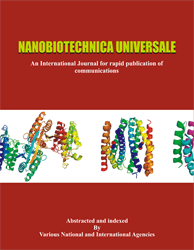Study of peritoneal macrophages, liver macrophages (KC) and spleen cells (splenic macrophages) in streptozotocin (STZ) induced mice
*Srikanta Guria
Post Graduate Department of Zoology, Barasat Govt. College, Barasat, Kolkata-700124 (India) *Corresponding author: Dr. Srikanta Guria E-mail:srikantaguria81@gmail.com
ABSTRACT
Diabetes mellitus (DM) is a major health problem worldwide. Streptozotocin (STZ) has been extensively used to induce diabetes for various studies. The present study was designed to demonstrate the morpho-functional changes of peritoneal macrophages, macrophages of liver and spleen cells in STZ induced mice. Mice were divided into experimental and their respective control groups. In our experiment STZ was administered by i.p. injection in doses of 45 (group A), 50 (group B), and 60 mg/kg body weight (group C) dissolved in normal saline (0.9% NaCl) toovernight-fasted mice. Normal saline (0·9% NaCl) was injected into mice peritoneum and the aspirate was taken for macrophage study. Spleen and liver were removed using the forceps and mashed through the cell strainer into the petridish containing 0·1 Μ phosphate buffer saline (PBS, pH 7·2) in presence of trypsin- EDTA. Spleen and liver cell suspensions were used to study. A significant percentage of peritoneal macrophages, liver macrophages and splenic cells became pyknotic and necrotic in group B and C mice. Increased peritoneal macrophage aggregation and increased tendencyof macrophage fusion was noticed in both group B and C mice which may relate inflammatory reaction. Some studies indicated hyperglycemia aggravated hepatic injury by inhibiting liver-resident macrophage M2 polarization. Considering that macrophage is an important component of immune system, suppression of macrophage viability may explain, the increased susceptibility of diabetic patients to infection.
